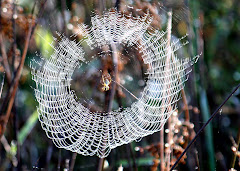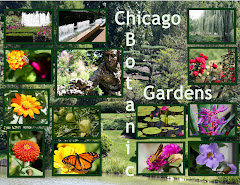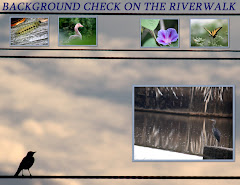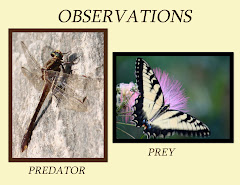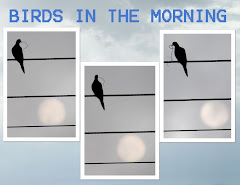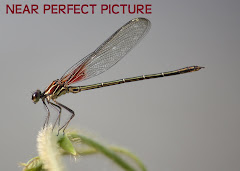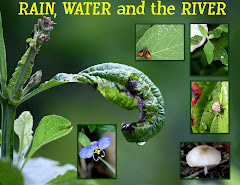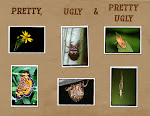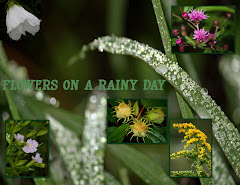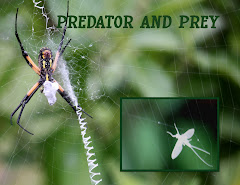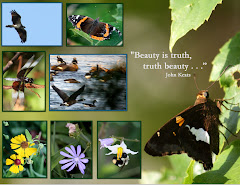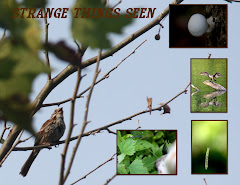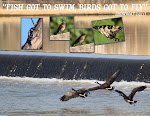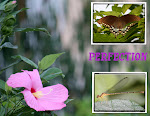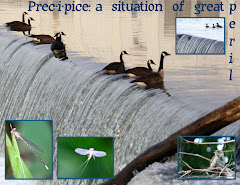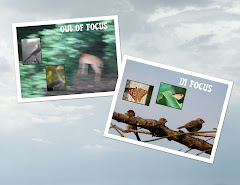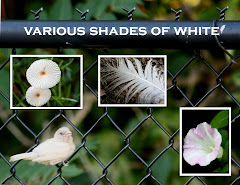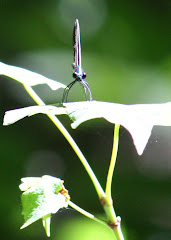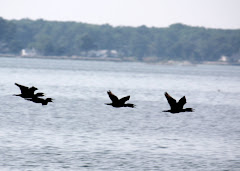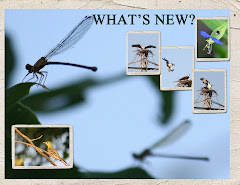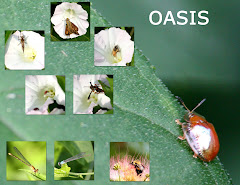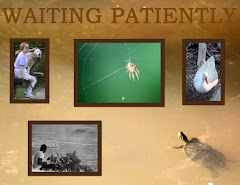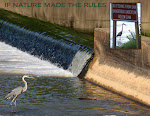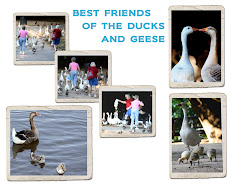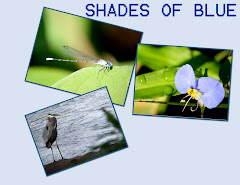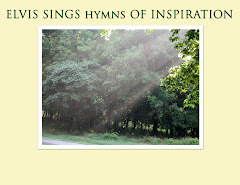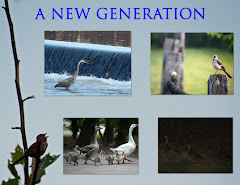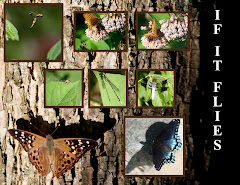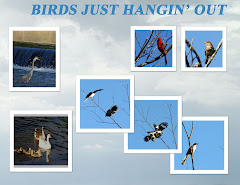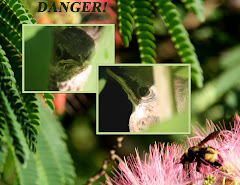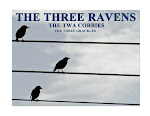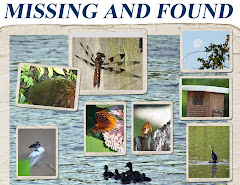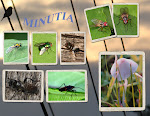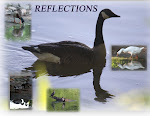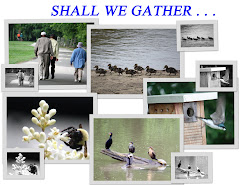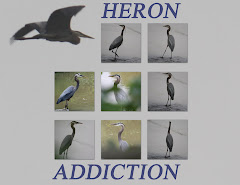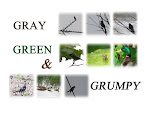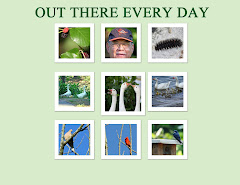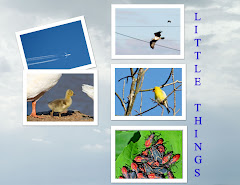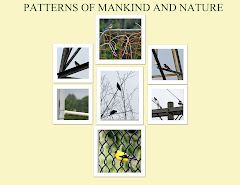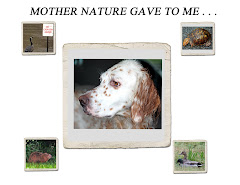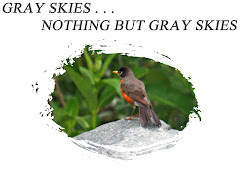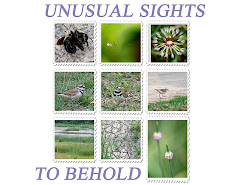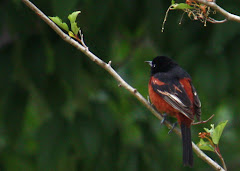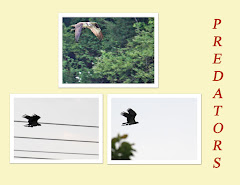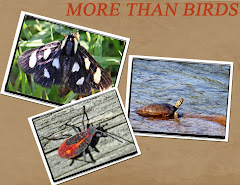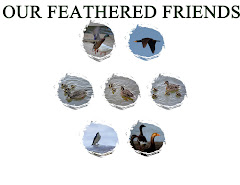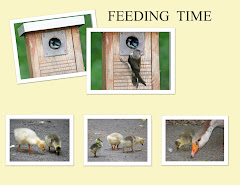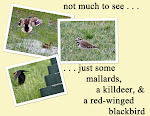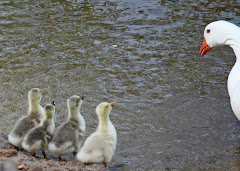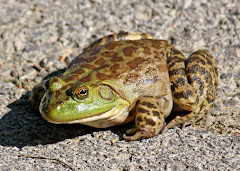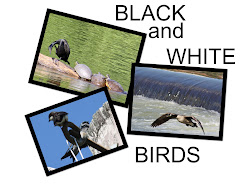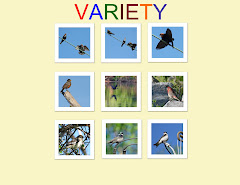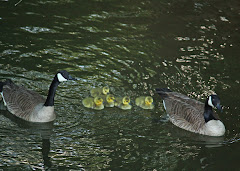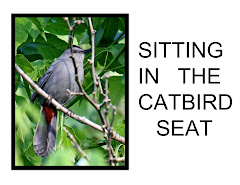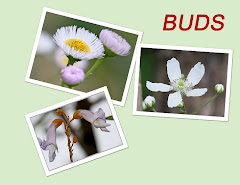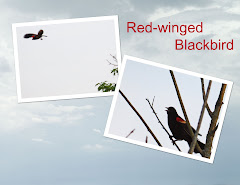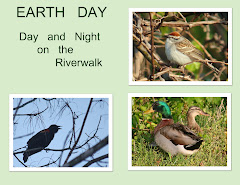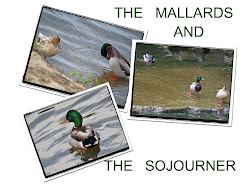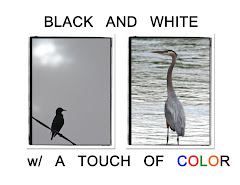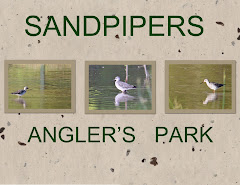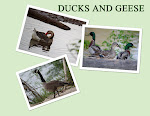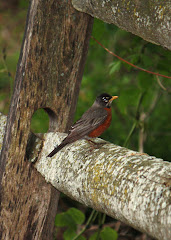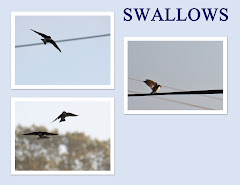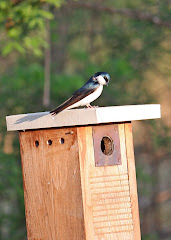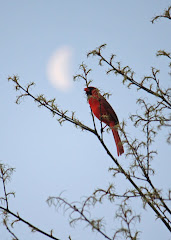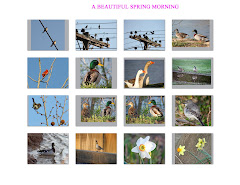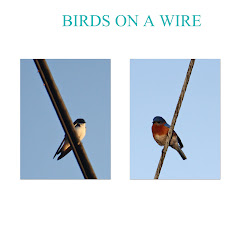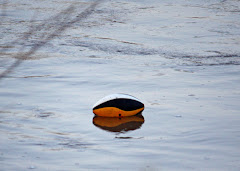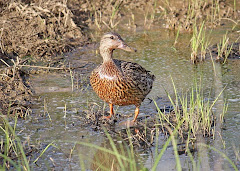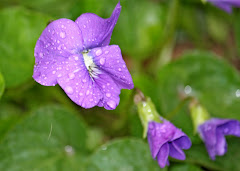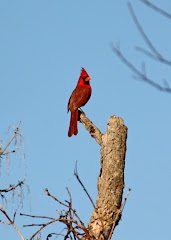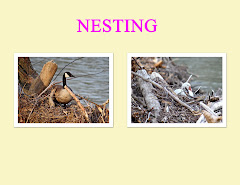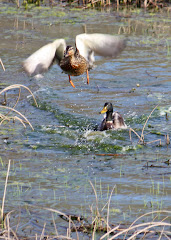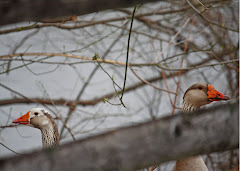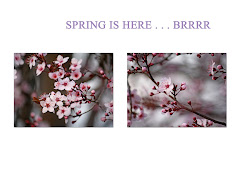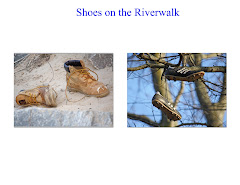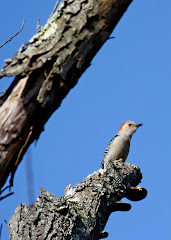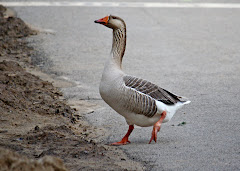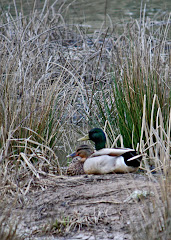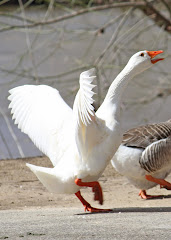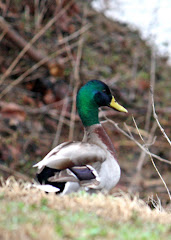CLICK ON PICTURES TO ENLARGE
(JUNE 19, 2010) This morning, as we were in the darkest part of the dark woods below Dan Daniel Park, we saw some moving white dots in front of us and the faint dark figures of ducks. It was the mama mallard and her six (there used to be seven) ducklings.

I have taken dozens of pictures of this small family over the past few weeks, and the ducklings are now almost the size of their mother.
It was 6:15, right after dusk, and the young ducklings were grazing in the field of good vegetation. When they saw Sadie, they headed across the path towards the river, but I noticed that they came back to the field once we had passed.
Ducks are cute, but would I want a duck for a pet? Give up Sadie and walk my duck in the park? I don't think so. I'll keep Sadie.
A little further up the trail we saw some fishermen who took their fishing seriously with about a dozen fishing rods being carried on a rolling cart. I asked one of them if he had caught anything, and he said, "Not this year. But the guy over there has a brother who caught a 45 pounder a few weeks ago." I usually take the size of the fish a fisherman says, divide it by two and then add a couple of pounds, so I guessed that the fish was around 25 pounds, but I said, "That's a big one. The size of my dog."
We walked on. Behind us was Lucky, a Pekingese that Sadie sees nearly everyday. Lucky caught up with us, and the two dogs sniffed each other while the lady who owns Lucky and I talked. She said, "I don't know why I got Lucky. But when I went to the Humane Society, I saw her little face, and that night I couldn't think of anything else. I'm glad I got her."
We were talking "dogs" when a bike rider came up and joined the conversation. As he left, he said, "I have one bit of advice for you. Don't trade your dog for an elephant." Then he rode away.
This was a "plastics" moment, right out of The Graduate. I thought about that sentence over and over as I walked the trail. Was there something philosophical about the statement? Was he saying that you need to be happy with what you have? Was he saying don't wish for something bigger? Was he saying stick with what you know rather than what you think might be better? Was I getting too obsessed with this simple statement?
The Riverwalk raises questions for me each day. Today I saw what appeared to be a beetle on a leaf.

This bug was something I had never seen before. It was orange and black striped with white spots. What could it be? I didn't know, so when I came home, I looked it up on the internet and discovered it wasn't a beetle at all but a moth - an Ailanthus Webworm Moth that folds its wings when landed so it looks like a beetle.
That was easy to solve - much easier than the meaning of the comment, "Don't trade your dog for an elephant."
I continued on, and we saw Jodie, another small dog that Sadie meets most mornings. I was talking with Jodie's owner, and she told me, "I don't even have to set my alarm in the morning. Jodie comes right in and wakes me up wanting to go to the park. I didn't have to get up early this morning, but there he was, waiting to go the park." I told her that Sadie is patient, but gets very excited about going to the park each day. We both agreed that the dogs are wonderful to have to walk with, and then she moved on.
As we got to the location of where the Worsham Street Bridge used to be, I looked down over the bank and saw something moving in the water. As I stopped to look closer and take pictures, I realized it was a 10 foot (actually, take that number, divide it by two and add a couple for the real size) water moccasin. It was slithering along the shoreline looking, I suppose, for a quick meal.
It was then that the comment of "Don't trade your dog for an elephant" made a little more sense. I started thinking about the animals and insects we have seen on the Riverwalk this morning. The mallards, the moth, geese of all sizes, song birds, a wood duck, and a cooter turtle.

And then I thought about Sadie. None of these others of God's creatures would make good pets, just like an elephant wouldn't make a good pet, either.
But Sadie, my faithful companion on the Riverwalk, is just right. She is a domesticated animal - elephants, mallards, moths, geese, other birds, turtles and, most of all, water moccasins are not domestic, nor can they be domesticated. I don't think there will be a time when I see people walking their turtle or snake on the Riverwalk. But, dogs are just right. Forget the elephant - I'll keep my dog.
It was another good day on the Riverwalk.

 I took some pictures, but at 6:15 the lighting was not the best and the shots came out blurred. We also saw a heron fishing near the dam as several Canada geese floated by and an osprey settling into its nest above the Brantley Steam Plant. There were a handful of new yellow goslings near the train bridge being supervised by family and extended family. And, the flowers were blooming, the bees were buzzing, the damselflies were lighting gently on the leaves, and Sadie and I were enjoying the coolness before the heat of the day came upon us.
I took some pictures, but at 6:15 the lighting was not the best and the shots came out blurred. We also saw a heron fishing near the dam as several Canada geese floated by and an osprey settling into its nest above the Brantley Steam Plant. There were a handful of new yellow goslings near the train bridge being supervised by family and extended family. And, the flowers were blooming, the bees were buzzing, the damselflies were lighting gently on the leaves, and Sadie and I were enjoying the coolness before the heat of the day came upon us.















































